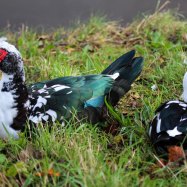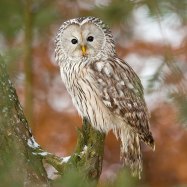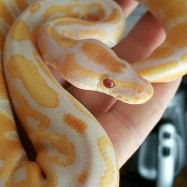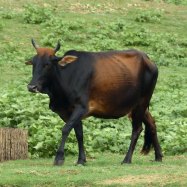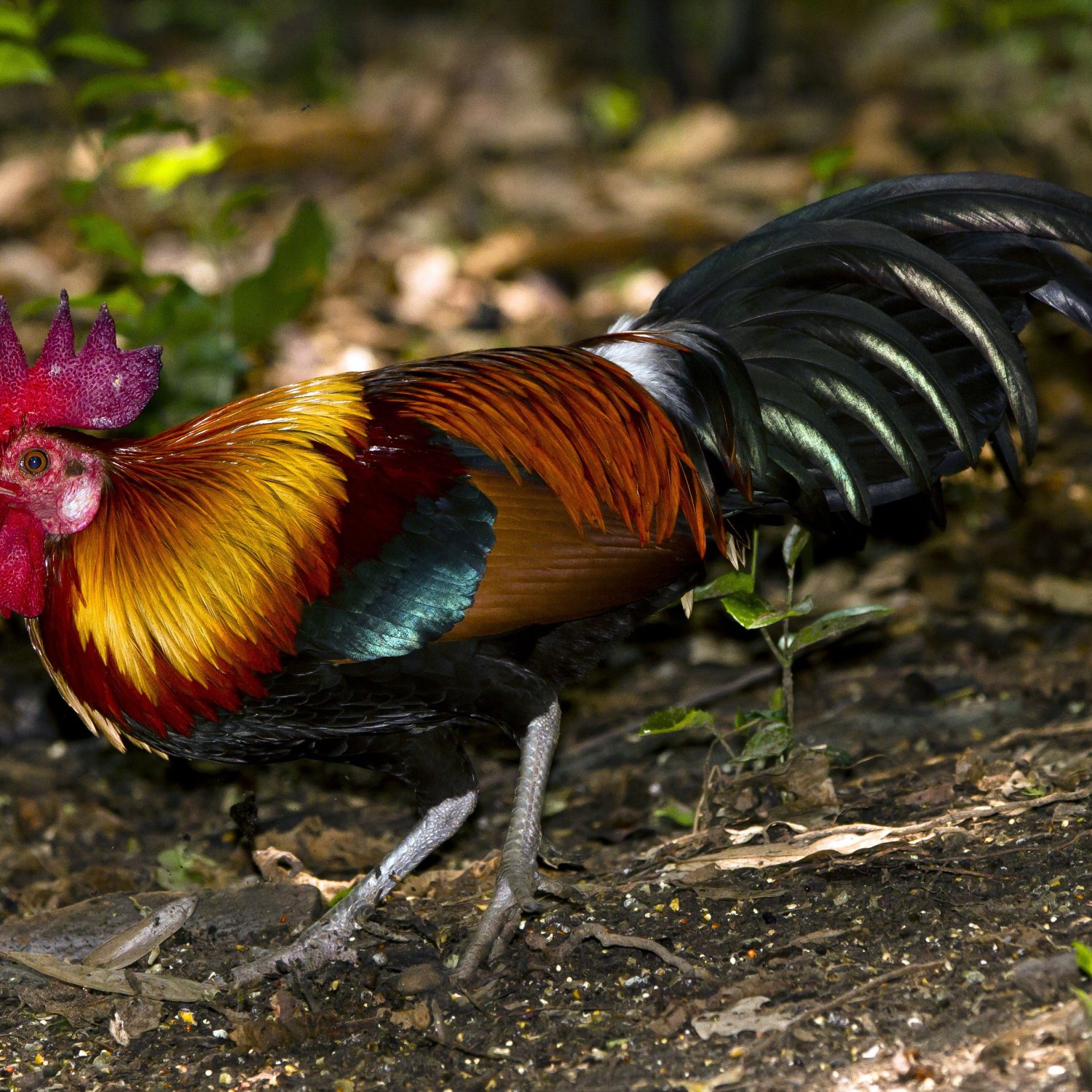
Junglefowl
35-75 cm (14-30 inches)
Junglefowl, also known as the wild ancestor of domestic chickens, can be found in various parts of Asia. With a stocky body and strong legs, these birds can grow up to 14-30 inches in length. Belonging to the Phasianidae family, they are distinctively known for their brightly colored feathers and loud crowing. Keep an eye out for these beautiful fowls in the jungles of Asia! #Junglefowl #WildChickens #AsiaWildlife
Animal Details Summary:
Common Name: Junglefowl
Kingdom: Animalia
Habitat: Tropical and subtropical forests
The Colorful World of Junglefowl: Exploring the National Bird of Sri Lanka
Deep in the tropical and subtropical forests of Asia, there is a bird that stands out with its colorful and vibrant feathers. It is the Junglefowl, scientifically known as Gallus gallus, and commonly referred to as the National Bird of Sri Lanka. This magnificent bird belongs to the kingdom Animalia, phylum Chordata, class Aves, order Galliformes, and family Phasianidae. Its stunning appearance, unique behaviors, and rich cultural significance make it a fascinating animal to study and admire Junglefowl.Native to the lush jungles of India, the Junglefowl has gained worldwide fame for its spectacular appearance and habitat. It is a stunning avian species that embodies elegance, grace, and strength. From its stocky body shape to its vibrant plumage, every aspect of this bird is worth exploring. So, let's dive deep into the colorful world of Junglefowl and discover what makes it a truly remarkable creature.
The Habitat of Junglefowl
The Junglefowl is a master of adaptation, and it can thrive in various habitats. However, it is most commonly found in the tropical and subtropical forests of Asia. Its natural habitat includes dense forests, grasslands, and open woodlands. Unlike its domesticated cousin, the chicken, the Junglefowl prefers to live in the wild and is rarely seen near human settlements.Although they are primarily found in India, Junglefowl can also be spotted in various parts of Asia, including Sri Lanka, Nepal, Bhutan, and parts of Southeast Asia Jonah Crab. In Sri Lanka, they are a common sight in the lush green forests and are even considered a national treasure due to their cultural significance.
Feeding Habits of the Junglefowl
As omnivorous creatures, Junglefowl have a varied diet, which usually consists of insects, worms, seeds, and fruits. They are opportunistic feeders and can make use of any available food sources in their habitat. Sometimes, they can even be seen foraging on the forest floor, scratching and digging for food.Interestingly, Junglefowl are not picky eaters and are known to consume toxic plants that are normally avoided by other animals. This is due to their unique digestive system, which allows them to neutralize harmful toxins found in certain plants.
The Dazzling Plumage of Junglefowl
One of the most captivating features of the Junglefowl is its colorful plumage. Males have a striking appearance, with a combination of browns, reds, and blues, along with intricate patterns and markings on their feathers. On the other hand, females have a more subtle appearance, with a heavily patterned brown or grey plumage.The vibrant feathers of the male Junglefowl serve an important purpose – attracting a potential mate. During the breeding season, males showcase their plumage by strutting and dancing in front of female birds, hoping to impress them. The more colorful and vibrant their feathers are, the higher their chances of mating successfully.
Unique Body Shape of Junglefowl
Junglefowl have a stocky body shape with strong legs, a small head, and a distinctive comb atop their head. They have evolved to be fast and agile, due to the dense forest environment they live in. Their strong legs and talons give them the ability to jump high and fly short distances, making them excellent foragers.Being birds of both ground and forest, Junglefowl have evolved to have sharp talons and a powerful beak, making them excellent predators. Their strong legs and sturdy build also help them defend themselves against potential predators.
Cultural Significance of Junglefowl
Junglefowl hold great cultural significance in various parts of Asia, especially in Sri Lanka. It is the national bird of the country and features prominently in local mythology and stories. In Hindu mythology, the Junglefowl is believed to be closely related to the God of War, Skanda. In Sri Lankan folklore, it is considered a symbol of good luck and prosperity.Apart from their cultural significance, these birds also play an important role in maintaining the balance of their natural habitats. As predators, they help control insect and rodent populations, ensuring the health of the ecosystem.
Threats to the Survival of Junglefowl
Despite their cultural significance and importance in the ecosystem, Junglefowl face many threats to their survival. Their natural habitats are rapidly declining due to deforestation, leading to a decrease in their population. They are also hunted for their meat and feathers, further contributing to their decline.In Sri Lanka, where Junglefowl are declared a protected species, their numbers are decreasing due to the spread of avian diseases from domesticated chickens. The import of foreign chicken breeds has led to the cross-breeding of Junglefowl, resulting in the loss of their unique characteristics.
Conservation Efforts and Future Outlook
To ensure the survival of the Junglefowl, conservation efforts are underway in its native habitats. Many protected areas have been established to preserve their natural habitats, and efforts are being made to raise awareness about their cultural significance and ecological importance.In Sri Lanka, organizations like The Sri Lanka Wildlife Conservation Society (SLWCS) are working towards creating safe habitats for Junglefowl, while educating the local communities on the importance of preserving this species.
Looking towards the future, it is important that we continue to work towards the conservation of the Junglefowl and its natural habitats. By doing so, we can ensure the survival of this magnificent species and preserve their role as an important part of the ecosystem.
Conclusion
In conclusion, the Junglefowl is not just a beautiful bird with striking feathers, but it also has a unique cultural significance and plays a vital role in the ecosystem. From its adaptive behaviors to its vibrant plumage, there is much to learn and appreciate about this fascinating bird. It is our responsibility to protect and preserve the Junglefowl, ensuring that future generations can also admire its beauty and significance.

Junglefowl
Animal Details Junglefowl - Scientific Name: Gallus gallus
- Category: Animals J
- Scientific Name: Gallus gallus
- Common Name: Junglefowl
- Kingdom: Animalia
- Phylum: Chordata
- Class: Aves
- Order: Galliformes
- Family: Phasianidae
- Habitat: Tropical and subtropical forests
- Feeding Method: Omnivorous
- Geographical Distribution: Asia
- Country of Origin: India
- Location: Various parts of Asia
- Animal Coloration: Mainly brown or grey with patterns
- Body Shape: Stocky with strong legs
- Length: 35-75 cm (14-30 inches)
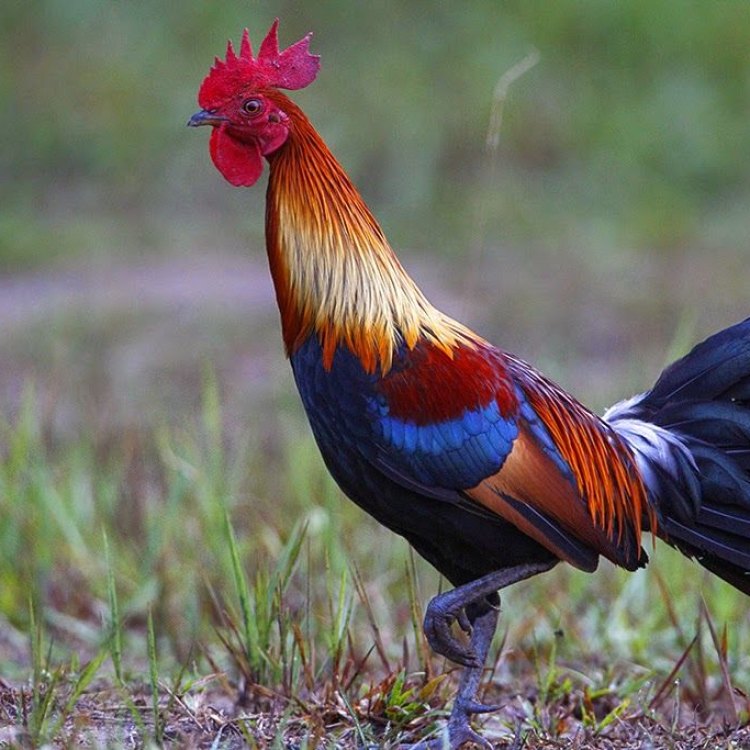
Junglefowl
- Adult Size: Small to medium-sized
- Average Lifespan: 5-7 years in the wild
- Reproduction: Sexual
- Reproductive Behavior: Mating displays and courtship rituals
- Sound or Call: Loud crowing calls in the mornings
- Migration Pattern: Non-migratory
- Social Groups: Flocks
- Behavior: Diurnal and territorial
- Threats: Habitat loss, hunting, and predation
- Conservation Status: Least Concern
- Impact on Ecosystem: Seed dispersal and insect control
- Human Use: Domestication for meat and eggs
- Distinctive Features: Brightly colored plumage in males
- Interesting Facts: Considered the ancestor of the domestic chicken
- Predator: Birds of prey, snakes, and mammals
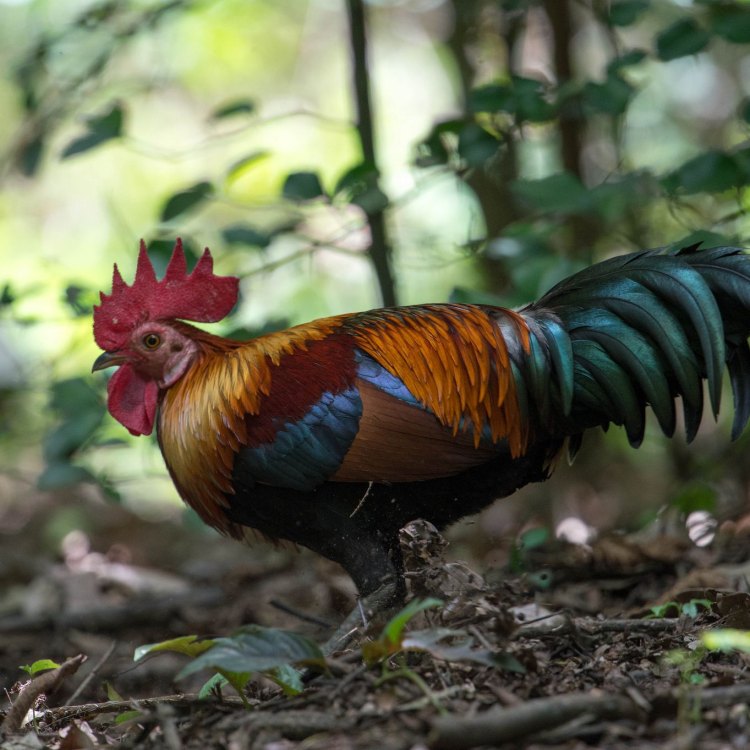
Gallus gallus
The Fascinating Junglefowl: A Colorful and Unique Bird Species
When one thinks of birds, images of soaring eagles, majestic peacocks, or cute little sparrows may come to mind. However, there is one bird species that often gets overlooked and underestimated – the junglefowl. This small to medium-sized bird may not have the same level of recognition as its larger and more flamboyant counterparts, but it is a truly fascinating and unique bird species that deserves to be in the spotlight. From its distinctive features to its impact on the ecosystem, the junglefowl is an important and interesting creature worth learning about PeaceOfAnimals.Com.Adult Size and Average Lifespan
The junglefowl is a relatively small to medium-sized bird, with males reaching an average weight of 2-3 pounds and females weighing around 1.5 pounds. Their average length is around 20 inches, making them about the same size as a domestic chicken. What sets the junglefowl apart, however, is its brightly colored plumage, particularly in males. With vibrant shades of red, yellow, and green, the males certainly stand out in the jungle.
In the wild, junglefowl have an average lifespan of 5-7 years, although they can live up to 12 years in captivity. Their lifespans are determined by various factors, including habitat, predators, and human influences.
Reproduction and Reproductive Behavior
Junglefowl are a sexually reproducing species, with males competing for the attention of females during the breeding season. This is where their distinctive features come in handy – the males use their brightly colored plumage to attract females Jack Chi. They also engage in elaborate mating displays and courtship rituals to impress the females.
Once a pair has been formed, the female will lay a clutch of eggs, usually between 5-7, and incubate them for 20-21 days until they hatch. The male is not involved in the incubation process but will help protect the nest and offspring once they hatch.
Sound or Call and Migration Pattern
One of the most recognizable features of the junglefowl is their loud crowing calls in the mornings. This is a common behavior in many bird species, but the junglefowl's call is particularly distinctive and can be heard up to a mile away. Their loud calls serve several purposes, including signaling their territorial boundaries and attracting a mate.
Unlike some migratory bird species, junglefowl are non-migratory and can be found in a variety of habitats throughout their range. This means they do not undertake long-distance seasonal movements, and their distribution remains consistent throughout the year.
Social Groups and Behavior
The social life of a junglefowl is quite complex and involves various behaviors and interactions. In the wild, they live in flocks, which consist of a dominant male, several females, and their offspring. The dominant male will defend his territory and mate from other males who may try to take over.
Junglefowl are also diurnal birds, meaning they are most active during the day. They spend their time foraging for food, socializing with other members of their flock, and engaging in grooming behaviors. They are also known to be quite territorial and will defend their area from potential threats.
Threats and Conservation Status
As with many other bird species, junglefowl face several threats that have resulted in a decline in their population. The biggest threat to their survival is habitat loss, which is caused by deforestation and urbanization. This not only affects the availability of suitable habitat for the birds but also disrupts their natural behaviors and mating rituals.
Hunting and predation are also major concerns for junglefowl. They are often hunted for their meat and eggs, and their brightly colored plumage can make them easy targets for predators such as birds of prey, snakes, and certain mammals.
Despite these threats, the junglefowl is currently listed as Least Concern on the IUCN Red List of Threatened Species. This is due to their large range and stable population. However, continued conservation efforts and monitoring of their population are still necessary to ensure their survival.
Impact on Ecosystem and Human Use
Junglefowl play an important role in their ecosystem, particularly when it comes to seed dispersal and insect control. As they forage for food, they unintentionally transfer seeds to different locations, contributing to the dispersal of plant species. They also help control insect populations by feeding on various insects and arthropods, which helps maintain a healthy balance in their environment.
Humans have also found a use for junglefowl – domestication. The junglefowl is considered the ancestor of the domestic chicken, and selective breeding has led to the development of various chicken breeds for meat and egg production. This domestication has had both positive and negative effects on the species, with some experts arguing that it has led to the decline of wild junglefowl populations.
Distinctive Features and Interesting Facts
As mentioned earlier, the junglefowl's distinctive feature is its brightly colored plumage, particularly in males. This feature is used for courtship and mating, but it also serves as a means of camouflage in the jungle.
In addition to their distinct features, there are also some interesting facts about junglefowl. For example, they are known to exhibit aggressive behaviors, particularly during the breeding season. This can include engaging in physical altercations with other males or chasing off potential predators.
Another interesting fact about junglefowl is their ability to fly. While they do not have strong flight capabilities, they can fly short distances to escape danger or search for food.
Conclusion
In conclusion, the junglefowl is a truly fascinating and unique bird species. From their brightly colored plumage to their interesting behaviors and impact on the ecosystem, they are a crucial part of their environment. However, they also face numerous threats that need to be addressed to ensure their survival. As humans, it is our responsibility to protect and preserve this beautiful and valuable bird species for future generations to appreciate and enjoy.
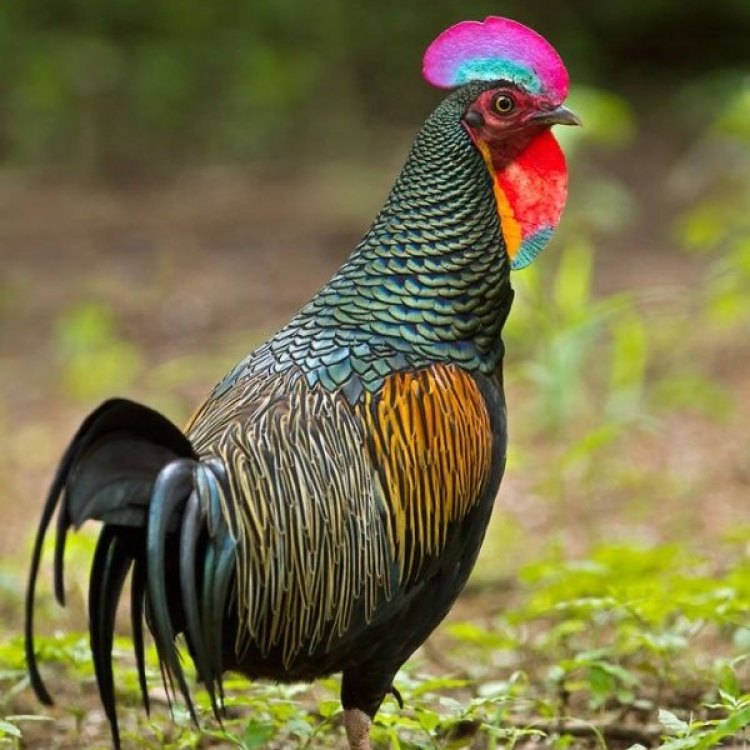
The Colorful World of Junglefowl: Exploring the National Bird of Sri Lanka
Disclaimer: The content provided is for informational purposes only. We cannot guarantee the accuracy of the information on this page 100%. All information provided here may change without prior notice.







